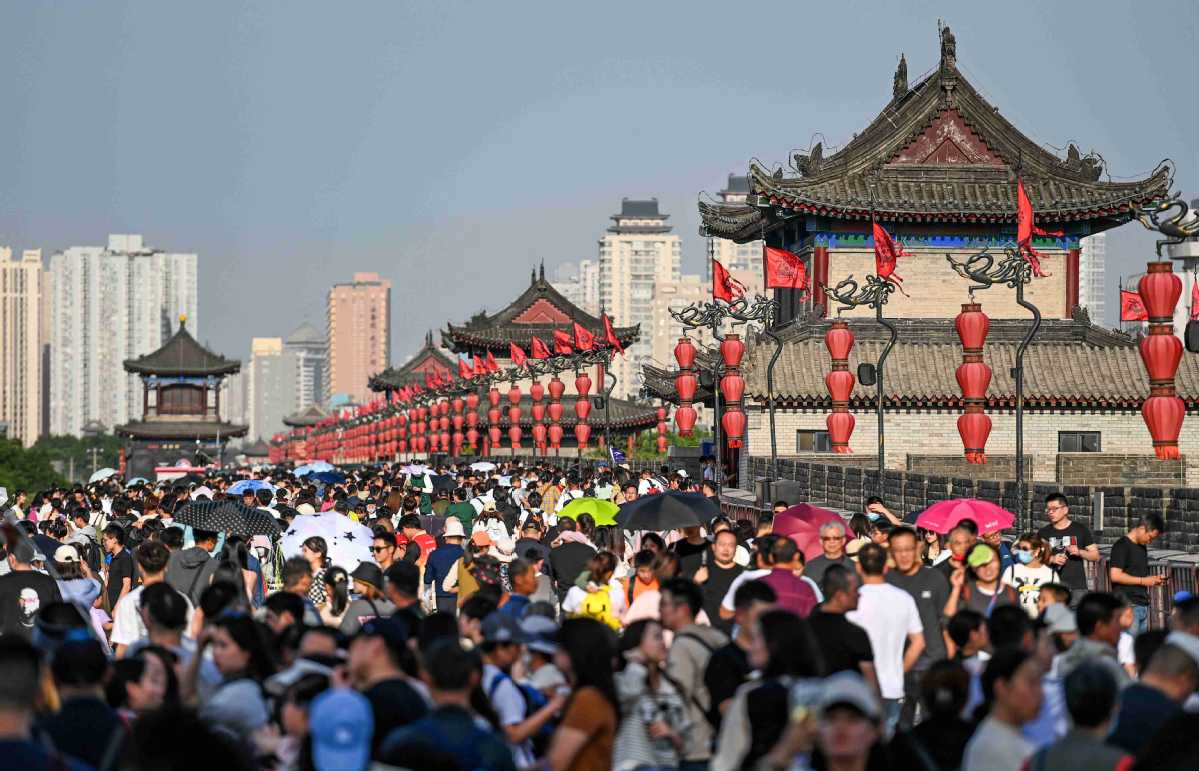
People visit the ancient city wall scenic spot in Xi'an, Northwest China's Shaanxi province, on April 30. [Photo/Xinhua]
It takes Bai Fenglun nearly a week to plan a four-day family itinerary in Xi'an, capital of the northwestern province of Shaanxi.
"The wheat foods of Shaanxi are famous, and you can also experience the process of making them," Bai told his clients on the phone while helping plan their trip.
The work is completely different from what he was doing 13 years ago as a group tour driver.
In 2010, his working day began with waiting at a railway station, an airport or other location where tourists would arrive, and he would then take a group of more than 20 people on a one-day tour of popular scenic sites, such as Emperor Qinshihuang's Mausoleum Site Museum — which houses the Terracotta Warriors and their horses — the Huaqing Palace and Mount Hua.
At the time, China's domestic tourism sector was growing rapidly. According to official data, the number of domestic tourists rose by 12 percent every year from 2006 to 2010, and total tourism revenue rose by 15 percent per annum. However, despite the large number of tourists, there was low consumption in the market, which restricted development.
Bai recalled that his business was good at the time, but tourism products and services were low-end and the market was chaotic, with many complaints from clients.
In 2016, he began a local guide business on Trip.com, a popular online travel agency, serving small tour groups and making arrangements according to tourists' needs.
"The visit time at each tourist site is flexible. It can be a quick glance or an in-depth tour," Bai said.
Two years later, his company received orders from dozens of tourist groups — a significant improvement from the one or two orders received when the company was launched. Seeing the hot prospects for personalized tourism, he turned his focus to the business of travel planning.
Gradually, Bai found that Chinese tourists preferred to have in-depth experiences, which meant that developing experiential tourism products quickly became an important part of his work.
In 2017, one of Bai's clients wanted his children to learn more about the production of the Terracotta Warriors, so Bai contacted a handicraft factory and arranged an experience for them. Later, he discovered that the factory had developed the experience into a regularly offered tourist activity.
"Such proactive transformation is becoming increasingly common in the tourism sector," he said.
In response to changing tourist demands, the sector continues to innovate its products and improve its services. For example, scenic sites in Xi'an have been using traditional Chinese cultural experiences to attract tourists for the past two years.
According to a report by the China Tourism Academy, the number of domestic tourists is expected to hit 4.55 billion this year, a year-on-year increase of about 80 percent. Total tourism revenue will be approximately 4 trillion yuan ($556 billion), up 95 percent from last year.
Speaking of his future plans, Bai said he is developing more tourist activities related to local life and intangible cultural heritage.
"I believe that the demand for small-scale and in-depth tours will continue to rise," he said.














